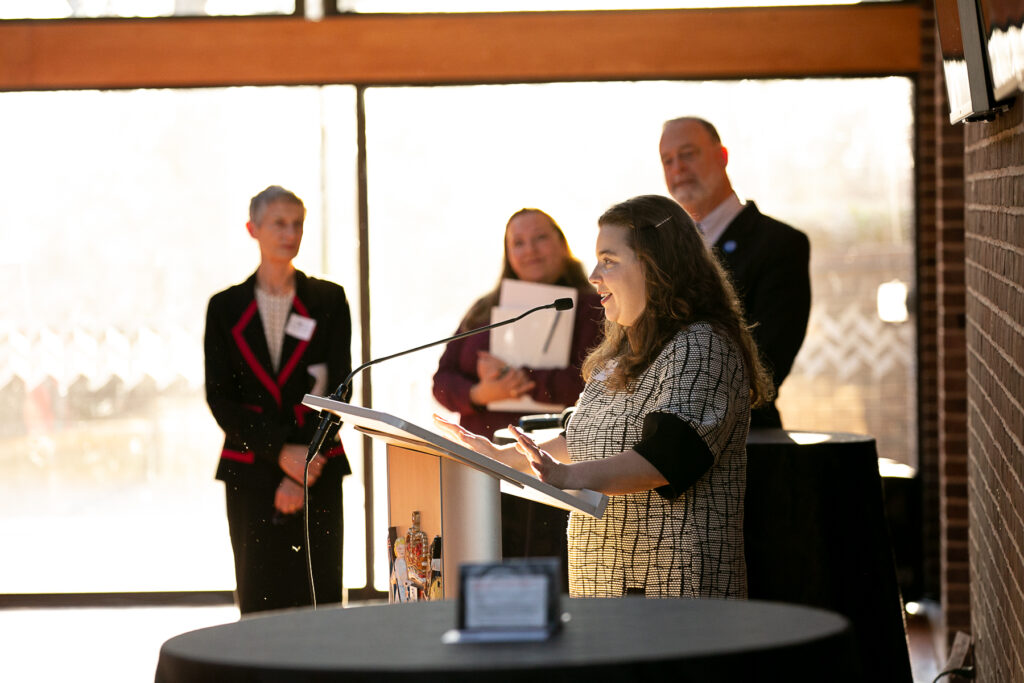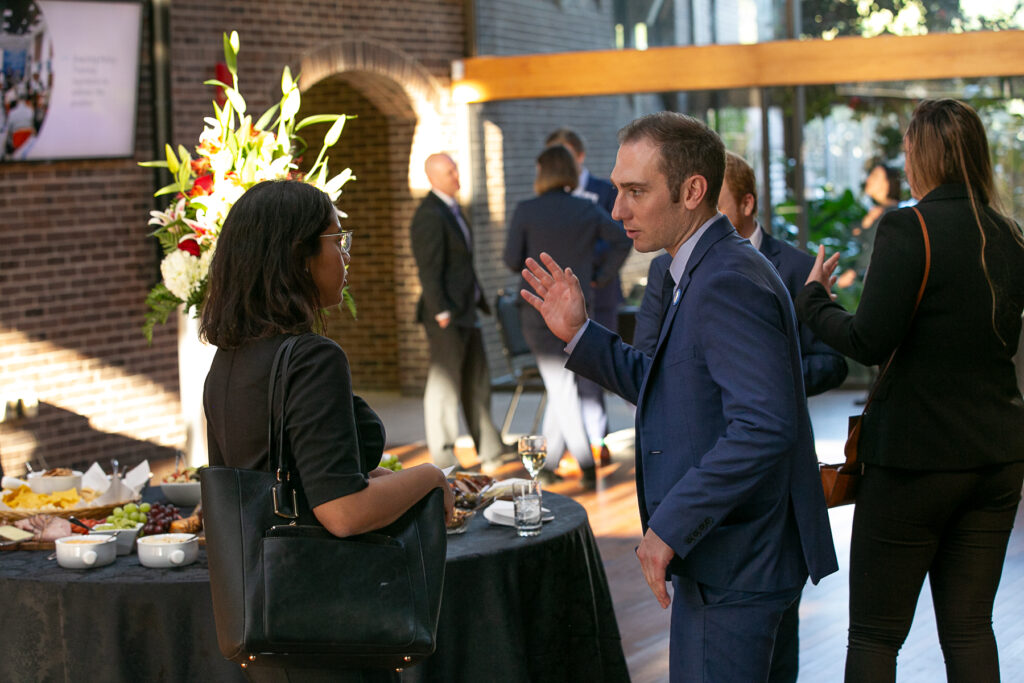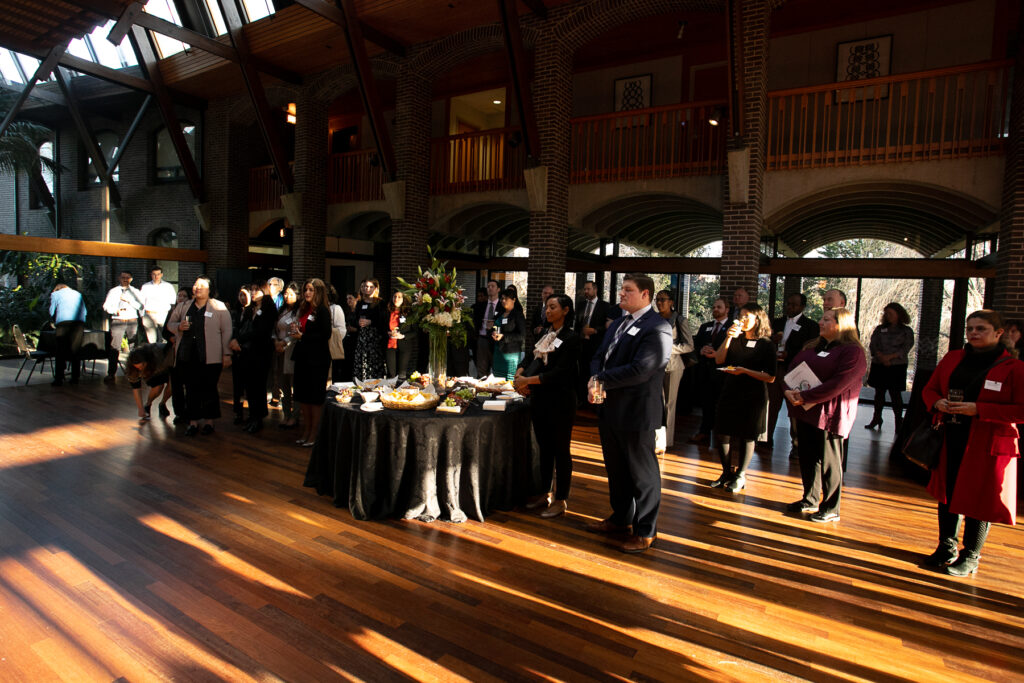Alexis Valauri-Orton, Program Officer, addressed attendees of the second annual Ocean Acidification Day of Action held at the Embassy of New Zealand on the 8th of January, 2020. These are her remarks:
8.1. That’s the number that brought us all here today. It’s today’s date, of course — the 8th of January. But it’s also a profoundly important number for the 71% of our planet that is the ocean. 8.1 is the current pH of the ocean.
I say current, because the ocean’s pH is changing. In fact, it is changing faster than at any time in geologic history. When we emit carbon dioxide, about one quarter of it is absorbed by the ocean. The moment that CO2 enters the ocean, it reacts with water to form carbonic acid. The ocean is 30% more acidic now than it was 200 years ago, and if we continue emitting at the rate we are today, the ocean will double in acidity by the end of my lifetime.
This unprecedented change in the ocean’s pH is called ocean acidification. And today, on the second annual Ocean Acidification Day of Action, I want to tell you why I care so much about addressing this threat, and why I am so inspired by the work each of you is doing.
My journey began at the ripe age of 17, when my dad left a copy of the New Yorker on my bed. In it was an article called “The Darkening Sea,” which detailed the terrifying trend of the ocean’s pH. Flipping through that magazine article, I stared at pictures of a tiny marine snail whose shell was literally dissolving. That marine snail is called a pteropod, and it forms the base of the food chain in many parts of the ocean. As the ocean becomes more acidic, it becomes harder, and ultimately impossible, for shellfish — like pteropods — to build their shells.
That article captivated and terrified me. Ocean acidification doesn’t just affect shellfish- it slows down coral reef growth and affects the ability of fish to navigate. It could wipe out the food chains that support our commercial fisheries. It could dissolve the coral reefs that support billions of dollars of tourism and provide vital shoreline protection. If we don’t change our course, it will cost the global economy $1Trillion a year by 2100. Two years after I read that article, ocean acidification hit close to home. Literally. The oyster industry in my home state, Washington, faced collapse as oyster hatcheries experienced nearly 80% mortality. Together, scientists, business owners, and legislators came up with a solution to save Washington’s $180 million shellfish industry. Now, hatchery owners on the west coast monitor the coastline and can actually shut off the intake of water into their hatcheries if an acidification event is about to occur. And, they can buffer their waters which allows baby oysters to thrive even if the outside water flowing in is not hospitable.

But the real challenge of addressing ocean acidification didn’t hit me until I was far away from home. I was in Ban Don Bay, Thailand, as part of a year-long fellowship studying how ocean acidification might affect communities around the world. Ban Don Bay supports an enormous shellfish farming industry that feeds people throughout Thailand. Ko Jaob has been farming in the region for decades, and told me that he was worried. There are changes in the water, he said. It’s becoming harder to catch the shellfish seed. Can you tell me what is happening, he asked? But, I couldn’t. There was absolutely no data there. No monitoring information to tell me whether ocean acidification, or something else, was causing Ko Jaob’s problems. If there had been monitoring, he and other oyster farmers could have planned their growing season around the changes in chemistry. They could have decided to invest in a hatchery to protect oyster seed from the mortality that hit the West Coast of the US. But, none of that was an option.
After meeting Ko Joab, I took a flight to the next destination of my research fellowship: New Zealand. I spent three months on the beautiful South Island working at a greenshell mussel hatchery in Nelson and on a bluff oyster farm in Stewart Island. I saw the splendor of a country that treasures its marine resources, but I also saw the hardships endured by the industries bound to the sea. So many things can tip the scales against a shellfish grower. When I was in New Zealand, ocean acidification wasn’t on many people’s radars. The big concern at most shellfish farming facilities was an oyster virus that was spreading from France.
It’s been eight years since I lived in New Zealand. In those eight years, the scientists, industry members, and policymakers there 1made an important decision: they choose to act. They choose to address ocean acidification because they knew it was too important to ignore. New Zealand is now a global leader in the fight to address this issue through science, innovation, and management. I am honored to be here today to recognize New Zealand’s leadership. In the eight years that New Zealand has been making progress, so have I. I joined The Ocean Foundation four years ago to make sure I would never have to tell someone like Ko Joab that I didn’t have the information I needed to help him and his community secure their future.
Today, as a Program Officer, I lead our International Ocean Acidification Initiative. Through this initiative we build the capacity of scientists, policy makers, and ultimately communities to monitor, understand, and respond to ocean acidification. We do this through a combination of on the ground training, delivery of equipment and tools, and general mentorship and support of our partners. The people we work with range from senators, to students, to scientists, to shellfish farmers.

I want to tell you a little bit more about our work with scientists. A primary focus of ours is to help scientists create monitoring systems. Because monitoring in many ways tells us the story of what is happening in the water. It shows us patterns over time – highs and lows. And that story is so important to being prepared to fight back, and adapt, so that we can protect ourselves, our livelihoods, and our way of life. But, when I started this work, monitoring just wasn’t happening in most places. The story pages were blank.
A key reason for this was the high cost and complexity of monitoring. As recently as 2016, monitoring ocean acidification meant investing at least $300,000 to buy sensors and analysis systems. But, not anymore. Through our Initiative we created a low-cost suite of equipment that we nicknamed GOA-ON — the global ocean acidification observing network — in a box. The cost? $20,000, less than 1/10th the cost of previous systems.
Box is a bit of a misnomer, though everything does fit in a very large box. This kit comprises 49 items from 12 vendors that enable scientists who only have access to electricity and seawater to collect world class data. We take this modular approach because it’s what works in most coastal countries. It’s so much easier to replace one small part of your system when it breaks, rather than being derailed when your all-in-one $50,000 analysis system shuts down.
We have trained more than 100 scientists from more than 20 countries on how to use GOA-ON in a Box. We have procured and shipped out 17 kits to 16 countries. We have provided scholarships and stipends for training and mentorship opportunities. We have seen our partners grow from students to leaders.

In Fiji, Dr. Katy Soapi is using our kit to study how mangrove restoration affects the chemistry of a bay. In Jamaica, Marcia Creary Ford is characterizing the chemistry of the island nation for the first time. In Mexico, Dr. Cecilia Chapa Balcorta is measuring chemistry off the coast of Oaxaca, a site which she thinks might have the most extreme acidification in the country. Ocean acidification is happening, and will keep happening. What we are doing at The Ocean Foundation is setting coastal communities up for success in the face of this challenge. I’m looking forward to the day when every coastal nation knows their ocean story. When they know the patterns of changes, the highs and lows, and when they can write the ending — an ending in which coastal communities and our blue planet is thriving.
But we can’t do it alone. Today, on the 8th of January – the Ocean Acidification Day of Action – I ask each of you to follow the leadership of New Zealand and Mexico and to ask yourself “What can I do to help my community be more resilient? What can I do to fill gaps in monitoring and infrastructure? What can I do to make sure the world knows that we must address ocean acidification?”
If you don’t know where to start, then I’ve got good news for you. Today, in honor of this second Ocean Acidification Day of Action, we are releasing a new Ocean Acidification Guidebook for Policymakers. To access this exclusive guidebook, please follow the instructions on the note cards scattered throughout the reception. The guidebook is a comprehensive collection of all existing legislative and policy frameworks that address ocean acidification, with commentary on which approach works best for different goals and scenarios.
If you want to know more about the guidebook, or if you don’t know exactly where to start, please, come find me or one of my colleagues. We would be thrilled to sit down and help you begin your journey.







